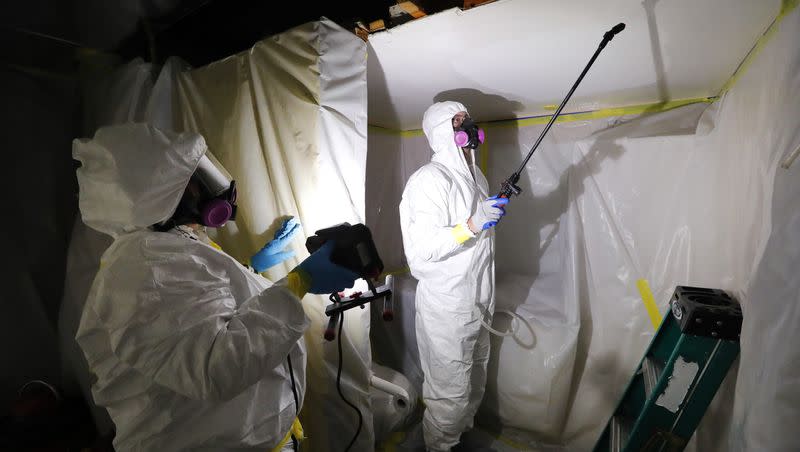Why is asbestos still killing 12,000 Americans a year?

Most people know that asbestos exposure can be dangerous for health, but they may not realize that asbestos-related diseases still kill about 12,000 Americans every year.
The perils of asbestos have been known since the early 1960s. But that knowledge has been slow to reduce deaths, since the journey from exposure to dangerous disease development can take decades.
The National Institute for Occupational Safety and Health points out that asbestos is a class of naturally occurring mineral fibers that have been used widely for industrial processes and products. “Asbestos fibers have industrial and commercial applications because of their strength, flexibility and electrical and heat-resistant properties.”
The Environmental Protection Agency has banned some, but not all, asbestos-containing materials and set stringent rules in place. But it notes that “asbestos fibers may be released into the air by the disturbance of asbestos-containing material during product use, demolition work, building or home maintenance, repair and remodeling. In general, exposure may occur only when the asbestos-containing material is disturbed or damaged in some way to release particles and fibers into the air.”
The fibers have been used in everything from automobile brakes, tiles, textiles, roofing materials and insulation to cement.
According to the Agency for Toxic Substances and Disease Registry in the Centers for Disease Control and Prevention, people can be exposed to asbestos when material that contains it releases fibers. Asbestos can be inhaled, ingested or lodged in the skin.
How exposure occurs
In America, the most common exposure for workers occurs while doing maintenance, repair or removal of old products that contain asbestos. Those same tasks can lead to at-home exposure if old asbestos is around. But auto repairs can lead to exposure. So can gardening, since asbestos can naturally occur in soil.
No one’s mining for asbestos in the United States now — it was banned in 2002 — but the United States is not among the nearly 70 countries that have partially or fully banned asbestos, per the Mesothelioma Guide.
Some homes, buildings and certain products still contain it, per the registry, which notes it can still be found naturally in the environment and “from the breakdown or disposal of old asbestos products.”
Serious health challenges
It’s also important to point out that just being exposed to asbestos doesn’t mean someone will develop health problems. But when illness occurs, it can be serious or even fatal.
Medical conditions that arise from asbestos exposure include asbestosis, which is scarring of the lungs from exposure, as well as asbestos-related lung abnormalities, lung and laryngeal cancer and malignant mesothelioma. Patients can have a combination of the diseases, according to CDC.
Per Asbestosnation.org, mesothelioma is a “rare and always fatal cancer” that strikes the thin membrane that lines the lungs, heart, chest cavity, gastrointestinal system and reproductive organs. The membrane is called the mesothelium. The Mesothelioma Guide says “asbestos is the only proven cause of this cancer” and notes about 3,000 people in the U.S. are diagnosed with the disease every year. Between 1999-2015, 45,221 deaths in the U.S. listed mesothelioma as the cause of death.
About a third of those with mesothelioma are military veterans.
Experts say that smokers are especially vulnerable if they are also exposed to asbestos because their lungs are already at risk. But for anyone, symptoms related to exposure are not apt to appear for even decades.
“After exposure occurs, asbestos can’t be removed from the lungs. Preventing further harm to the respiratory system can lower the chances of disease developing or slow down progress of an existing disease,” according to the registry. Preventive steps include getting regular medical exams, staying current on vaccines against flu and pneumonia, not smoking and avoiding further exposure to asbestos.
An article in The Guardian this week said that companies being sued for liability because someone got sick from asbestos exposure are using what it called “the Texas two-step.” Per the article, that “involves offsetting liabilities into a corporate entity and filing for bankruptcy through the new firm, resulting in lawsuits to be suspended.”

